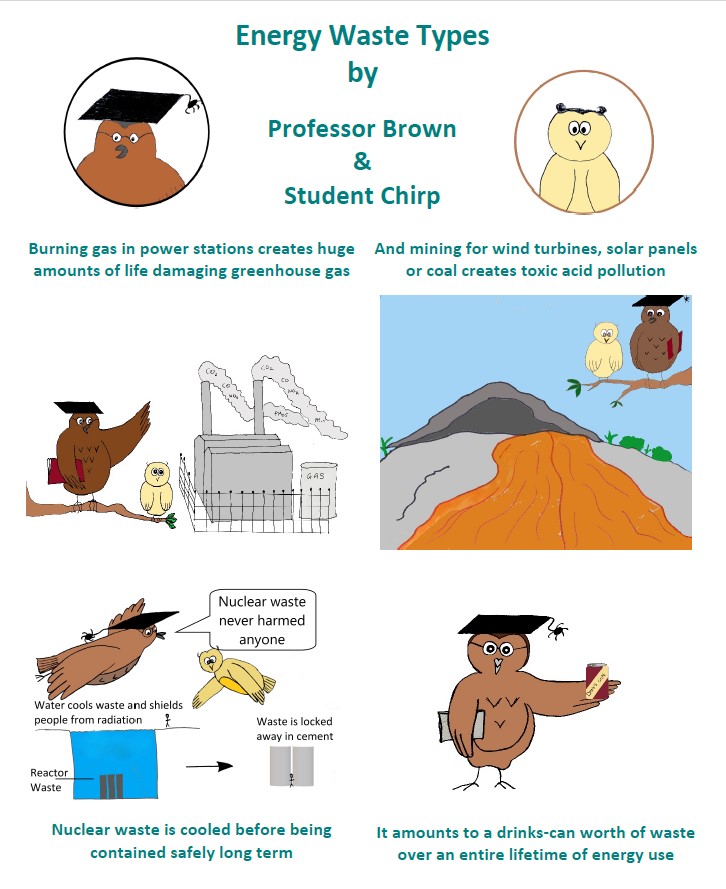21/05/25 by Marie

Contrary to media reporting, radioactive waste is not a public health hazard, and it never hurt anyone. The issue of public mistrust is discussed here.
Emissions from burning fossil fuels, on the other hand, cause devastation worldwide by contributing to more frequent and intense extreme weather events like typhoons, droughts, and famines.
Also note significant chemical waste arises from the materials needed for intermittent energy technology around which the grid burns gas.
The nuclear industry is held to incredibly high account for the waste produced. The radioactive content mostly consists of heavy metals, and this is published in the publicly available UK radioactive waste inventory. A natural fission reaction below Gabon, which happened 2 billion years ago, and the ‘waste’ is still there; it hasn’t harmed anyone or anything.
Secondly, from the discussion with Dr Pete Bryant of Sizewell C, it is pointed out that although people immediately think of radioactivity from nuclear fission, the issue in practice is more about the excess heat that, for thermodynamic reasons to do with the Rankin/Carnot cycle, like with any thermal plant, poses more of a problem for those occupied with building a nuclear power station than the very small amount of contained solid waste.
Third is the consensus around what constitutes the level of radioactivity that we should be concerned about.
The current regulations for ionising radiation are largely based on a dose-response relationship established over 80 years ago by Herman Mueller, using very basic technology at the time. This framework operates on the unproven assumption of a stochastic effect that only ‘no dose’ is a safe threshold.
See our 3 minute video which explains the problems of LNT:
However, with advancements in monitoring technology, we now know that low background radiation exists globally, and our bodies are well-adapted to it.
Given the nuclear industry is regulated to ensure public exposure doesn’t exceed 1 mSv per year (for perspective, this is lower than the natural background radiation in Cornwall, which is 2.7 mSv), it’s little wonder why nuclear new builds have become increasingly costly and timely. In some areas of the world, background radiation levels exceed 200 mSv with no adverse health effects observed in those populations.
It seems we have a choice: either we base our regulations for low-dose radiation on actual evidence, or we apply equivalent pollution levies to greenhouse gases.
Leave a Reply
You must be logged in to post a comment.